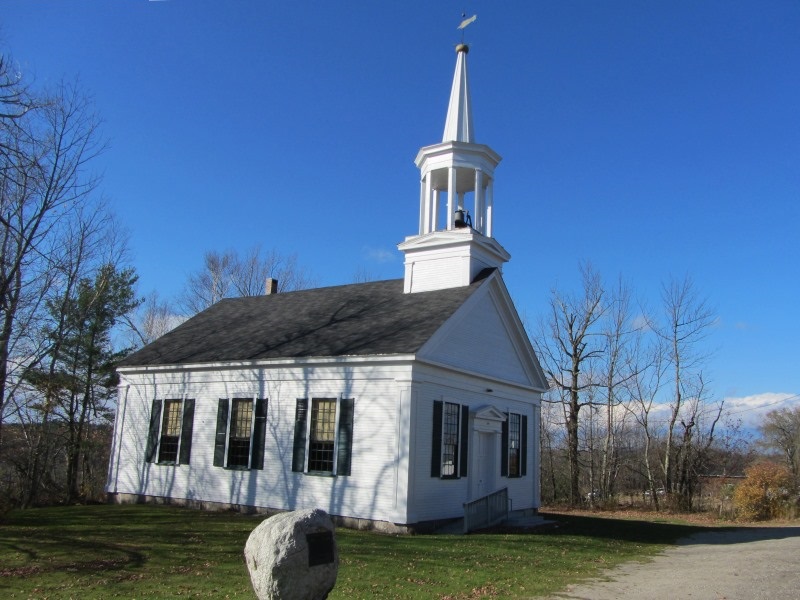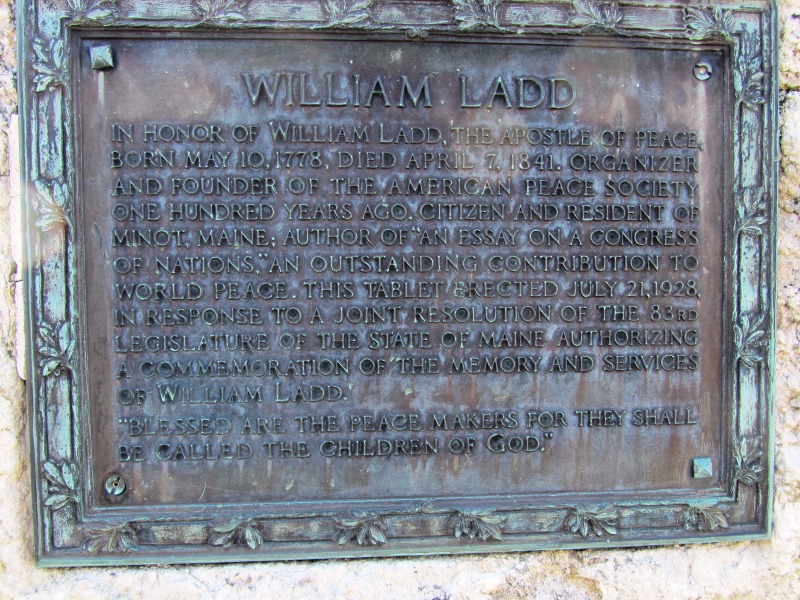  1828-1844 - Second & third incarnations of the New York Peace Society (1837-1844). On May 8, 1828, the society merges with others in New Hampshire, Maine & Massachusetts to form the American Peace Society.
The society will be re-formed as an independent organization in 1837. Until 1844, it sought to prevent war against Mexico by advocating negotiation. It then dissolved. An attempt was made to re-create it, but this was short-lived." See 1906 below. 1828-1844 - Second & third incarnations of the New York Peace Society (1837-1844). On May 8, 1828, the society merges with others in New Hampshire, Maine & Massachusetts to form the American Peace Society.
The society will be re-formed as an independent organization in 1837. Until 1844, it sought to prevent war against Mexico by advocating negotiation. It then dissolved. An attempt was made to re-create it, but this was short-lived." See 1906 below.
|
 

|   July 21, 1928 - William Ladd Boulder, Center Minot Congregational Church, Minot, Maine (USA). Monument created for the 100th anniversary of the founding of the American Peace Society & the 150th anniversary of William Ladd’s birth. Rests on granite from every state in New England, as well as stones from 14 other countries." Inscription on plaque: "In honor of William Ladd, the Apostle of Peace, born May 10, 1778, died April 7, 1841. Organizer and founder of the American Peace Society one hundred years ago. Citizen and resident of Minot, Maine, author of 'An Essay on a Congress of Nations' [1840], an outstanding contribution to world peace. This tablet erected July 21, 1928, in response to a joint resolution of the 83rd legislature of the State of Maine authorizing a commemoration of the memory and services of William Ladd. Blessed are the peace makers for they shall be called the children of God." July 21, 1928 - William Ladd Boulder, Center Minot Congregational Church, Minot, Maine (USA). Monument created for the 100th anniversary of the founding of the American Peace Society & the 150th anniversary of William Ladd’s birth. Rests on granite from every state in New England, as well as stones from 14 other countries." Inscription on plaque: "In honor of William Ladd, the Apostle of Peace, born May 10, 1778, died April 7, 1841. Organizer and founder of the American Peace Society one hundred years ago. Citizen and resident of Minot, Maine, author of 'An Essay on a Congress of Nations' [1840], an outstanding contribution to world peace. This tablet erected July 21, 1928, in response to a joint resolution of the 83rd legislature of the State of Maine authorizing a commemoration of the memory and services of William Ladd. Blessed are the peace makers for they shall be called the children of God."
|
![]() 1815-1828 - First incarnation of the New York Peace Society. "The first peace society to be established in the USA.
David Low Dodge [1774-1852] founds the society in 1815, soon after the end of the War of 1812. It became an active organization, holding regular weekly meetings & producing literature which is spread as far as Gibraltar & Malta, describing the horrors of war & advocating pacificism on Christian grounds. The society will have four different incarnations, as it has merged into other organizations or dissolved & then been re-created." See 1828 below.
1815-1828 - First incarnation of the New York Peace Society. "The first peace society to be established in the USA.
David Low Dodge [1774-1852] founds the society in 1815, soon after the end of the War of 1812. It became an active organization, holding regular weekly meetings & producing literature which is spread as far as Gibraltar & Malta, describing the horrors of war & advocating pacificism on Christian grounds. The society will have four different incarnations, as it has merged into other organizations or dissolved & then been re-created." See 1828 below.




1820 -
"In France, the early pacifist movements were initially based either on moral considerations, as in the case of the Société de la Morale chrétienne, founded in 1820, or on the theories of Utopian socialism put forward by Henri de Saint-Simon [1760-1825] and Charles Fourier [1772-1837]." [André Durand, 1996]




